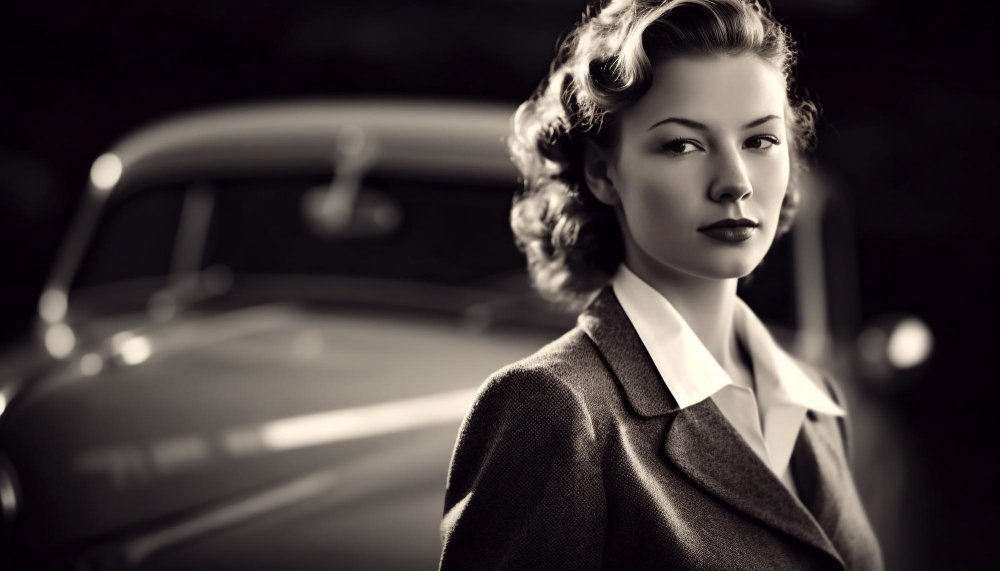Silent Struggles: Women’s Mental Health in the 1950’s
Harshitha Chaganti
October 2024
Today mental health awareness has been deeply engraved into society; however, for those alive during the 1950’s, like Marilyn Monroe and Rosemary Kennedey, the topic of mental health was seen as a taboo. Those who expressed struggles with their mental health were quickly labeled as “lunatics’ and often faced harsh prejudices. The experiences of the women that came forward made it even more unlikely that other women would follow. Women faced heightened mental health issues due to the expectation of perfection, with emotional struggles often dismissed as “hysteria” or weakness, leading to isolation and inadequate care. The lives of many celebrities and public figures is a powerful example of how this stigma affected women in the spotlight.

Those who expressed themselves were subjected to severe discrimination. Many were labeled as “unstable” or “hysterical,” leading to social isolation or damaged reputation, particularly for women. In Hollywood, this could mean being dropped from film roles, losing contracts, or being forced into secrecy to maintain a perfect public image.
Although Norma Jean Monroe was consistently seen in the spotlight by her stage name Marilyn, she was open about her struggles with depression and anxiety, at a time when admitting to such issues would ruin her career. Her decision to seek help likely stemmed from her childhood experiences, having grown up with a mother who was frequently in and out of asylums. Despite her efforts to seek out therapy, the limited understanding and support available at the time often left her feeling misunderstood and isolated.
Tragically, on August 5, 1962, she found dead from an apparent overdose, her death was ruled a probable suicide, though conspiracy theories have persisted over the years. Monroe had long struggled with her mental health issues, including depression and anxiety, compounded with her tumultuous personal life and highlighted the immense pressures she faced and the lack of effective mental health care during her time. Her death shocked the world and became a symbol of the darker side of fame and the toll it can take on mental health.
Back then, treatments for mental health issues were often harsh and limited. Common methods of treatments include things such as: electroconvulsive therapy(ECT), which involves sending electric currents through the brain, and lobotomies, a surgical procedure that aimed to reduce symptoms but often left patients with severe side effects. Psychoanalysis was also popular, with therapists exploring unconscious thoughts, but it wasn’t always effective. Many people were sent to mental institutions, where conditions could be poor and treatment was not always helpful.
A tragic and well-known cause of one of treatment involved Rose Marie “ Rosemary” Kennedy, the sister of former President John F. Kennedy. She underwent a lobotomy in 1941, a procedure that was intended to manage her mood swings and behavioral issues. However, the surgery left her with severe cognitive and physical impairments, requiring her to live in a care facility for the rest of her life. Her story highlights the dangers and lasting consequences of the harsh mental health treatments used during that era.
The experiences of celebrities such as Marilyn Monroe, Rosemary Kennedy and others in the 1950s revealed the harsh realities and stigma surrounding mental health during the time. Limited understanding and extreme treatments often left individuals struggling in silence, facing damaging consequences.These stories highlight the importance of recognizing and addressing mental health issues with compassion and proper care, a shift that began to take root in the decades that followed.
References
[1] Blackford, M. (2024, April 20). Marilyn Monroe’s Drug Use And Mental Health Issues. FHE Health. Retrieved October 12, 2024, from https://fherehab.com/learning/marilyn-monroe-drug-use
[2] Danise, A. (2022, October 24). What The Life Of Marilyn Monroe Teaches Us About Mental Health And Success Against All Odds. Forbes. Retrieved October 12, 2024, from https://www.forbes.com/sites/joshwilson/2022/10/24/what-the-life-of-marilyn-monroe-teaches-us-about-mental-health-and-success-against-all-odds
[3] Moore, S. (n.d.). Analyzing the Stigma Surrounding Mental Health. News-Medical. Retrieved October 12, 2024, from https://www.news-medical.net/health/Analyzing-the-Stigma-Surrounding-Mental-Health.aspx
[4] Rosemary Kennedy, The Eldest Kennedy Daughter (U.S. (2024, January 24). National Park Service. Retrieved October 12, 2024, from https://www.nps.gov/articles/000/rosemary-kennedy-the-eldest-kennedy-daughter.htm





